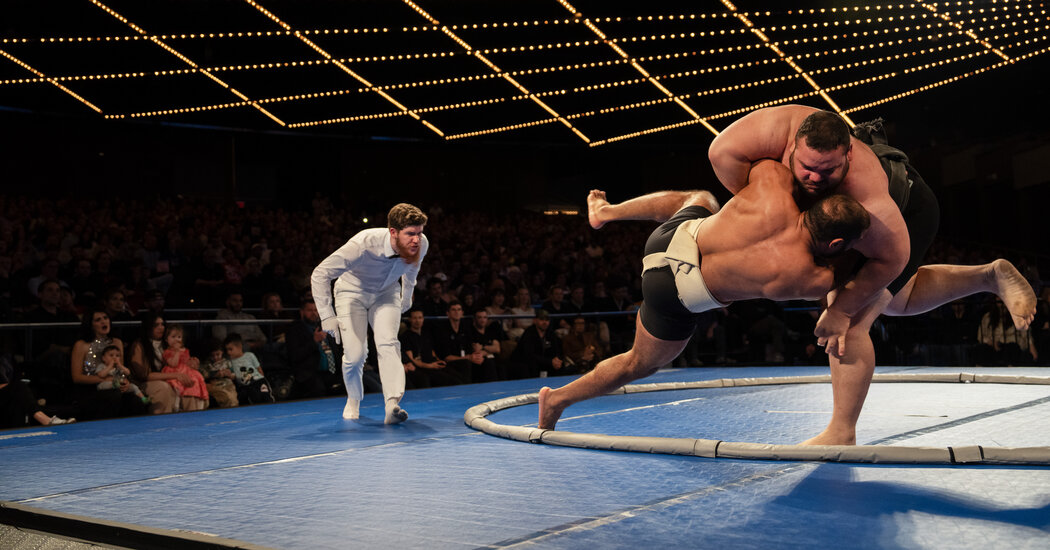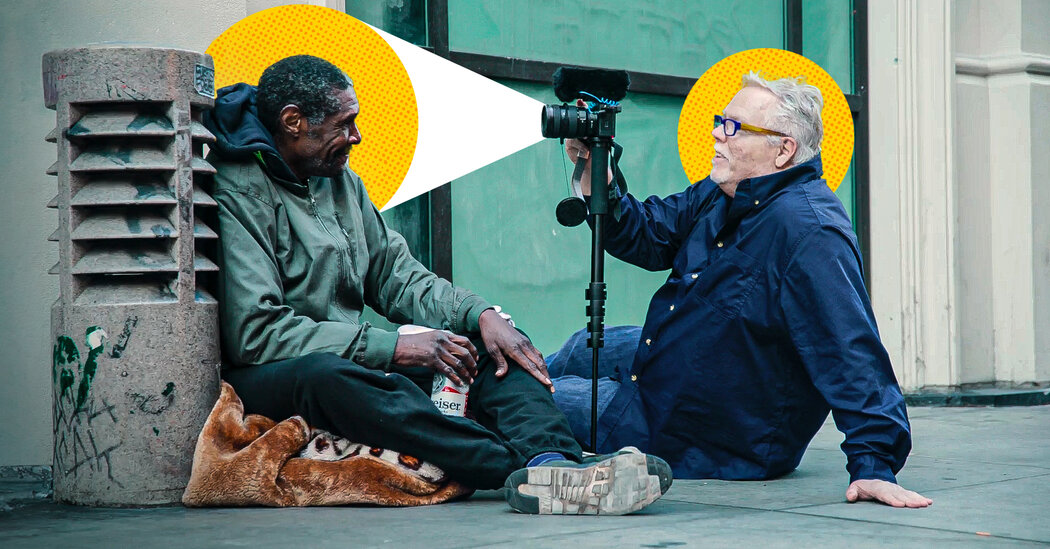NYT > Top Stories
2024-04-14 11:03:17
Two giant, shirtless men bow respectfully and then hurl themselves at each other in a violent pas de deux that ends with a victory in seconds.
But the setting for this tussle on Saturday night was not Tokyo or Osaka, but the Theater at Madison Square Garden in New York City. There, a boisterous, nearly full crowd got an in-person look at sumo wrestling, an ancient Japanese sport that is rarely seen stateside.
Before the matches began, Melinda Wilkerson, who like most in the crowd was set to see sumo live for the first time, said she expected to see “some talented athletes.” Her husband, Brett, clarified: “Some big talented athletes.”
That they did. Twelve wrestlers listed between 210 and 397 pounds squared off under the aegis of World Championship Sumo, which is organizing a series of exhibitions in the United States.
Despite the “world championship” name, the entrants were a cut below the champions who wrestle in Japan’s top division, which holds six events per year.
But among the wrestlers on hand was a favorite to win the tournament, Oosuna Arashi, known as Sandstorm, an Egyptian who did compete at the top level from 2013 to 2017.
A body builder at first, he took up sumo at age 14. “I didn’t understand it at the beginning,” Arashi said. “But there is no other sport like this. Any other sport, if you lose a point, you can stand up again, you can get your point back. But in sumo it’s just one hit — you won, you lost.”
In a sumo match, two competitors meet in a ring and each tries to throw the other out of it, or to the ground. After some grabbing, twisting and throwing, the bout is over in a flash.
In Japan, the tournaments last 15 days, with wrestlers competing just once per night. To appeal to a thrill-seeking audience, and to get the tournament over in an evening, the World Championship Sumo version includes four rounds, in which a competitor must win two out of three bouts, meaning wrestlers potentially can be in 12 bouts in a night in the altered format.
If the rules were somewhat different from traditional sumo, the atmosphere was even more so.
Wrestlers offered just a quick bow before their matches, rather than the elaborate rituals familiar in Japan, which include stomping to clear the devil out of the ring and throwing salt to kill bad spirits.
The crowd chanted “U.S.A.” for the American wrestlers. Ringside interviews included a healthy dose of braggadocio more associated with mixed martial arts or pro wrestling than sumo. And there was a lot more swearing than you would see at the decorous Japanese affairs.
The ring announcer played his hype-man role to the hilt. There even seemed to be an exchange of words between combatants before one bout. And embraces were as common as ceremonial bows after matches.
Arashi is a big guy: 6 feet 2 inches and 355 pounds, according to organizers. But some top sumo wrestlers are as heavy as 450 pounds. Despite this, the smallest guys have a shot. The little man of Saturday’s card, Mohamed Kamal, known as Black Horse, checked in at 210 pounds, but used guile and positioning to make his way to the semifinals.
To maintain his own figure, Arashi said he consumed from 8,000 to 10,000 calories in three to five meals each day. For his main meal, he said, he eats two pounds of meat, like chicken or beef. “When it come to the fish, I go two to three pounds,” he said. But he avoids sugar: “Sugar kills the muscles.”
You can’t just eat your way to a championship. Arashi said his daily training ran between two and four hours. “Eighty percent of our training, we train for our legs,” he said. “The main thing for us is lower body training. Got to be so flexible. Got to be so powerful. Got to be so bulk.”
In the 2010s, Arashi competed at sumo’s top level. “I fought with the biggest names in the universe in sumo,” he said. He left the top circuit in Japan in part, he said, because of sanctions he faced after he got into a fender bender. The problem was not the accident, but rather the mere fact that he had been behind the wheel — the Japanese Sumo Association does not allow wrestlers to drive.
“In Japan, as a sumo wrestler you cannot drive, even if you have a license,” Arashi said. “You are a god, and the god cannot drive.”
The crowd in New York on Saturday enjoyed the novelty of the spectacle. “It’s pretty awesome to see a different culture of sports,” said Chris Frommeyer, a fan in attendance. “You think of big fat guys, but the mental capacity to know how to maneuver their opponents is insane to me.”
In the final, Arashi met Soslan Gagloev, an imposing Russian known as Big Bear, who in the first round had picked up his opponent and carried him out of the ring with imperious ease.
But Arashi dismissed his foe. “Big Bear is a teddy bear,” he said, offering the warning: “You want to go home, or rest in peace.”
He backed up his words in the final. In the first bout, after a long (by sumo standards) tussle while holding each other’s belts, Arashi pushed Gagloev out of the circle. In Bout 2, the Russian hooked a leg to get the win. But in the deciding match, Arashi turned Gagloev and threw him out of the ring.
Americans seemed to embrace a rare look at the traditional sport. But the between- and post-match soundtrack was a little different in New York — unless they were playing “Rock and Roll Part 2” and “Who Let the Dogs Out” in eighth century Japan.
Victor Mather and Todd Heisler
#American #Pizazz #Meets #Staid #Traditions #Sumo



